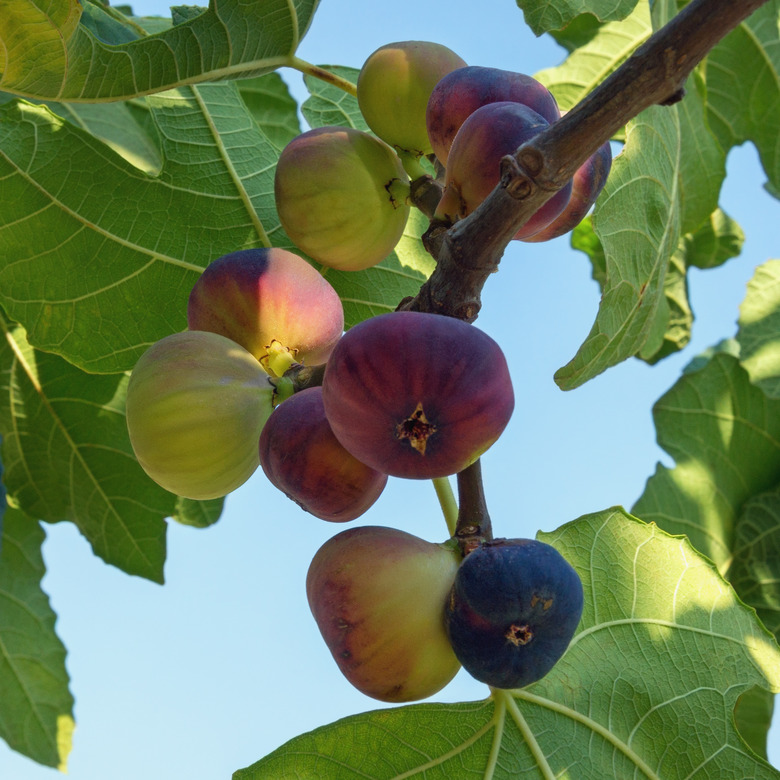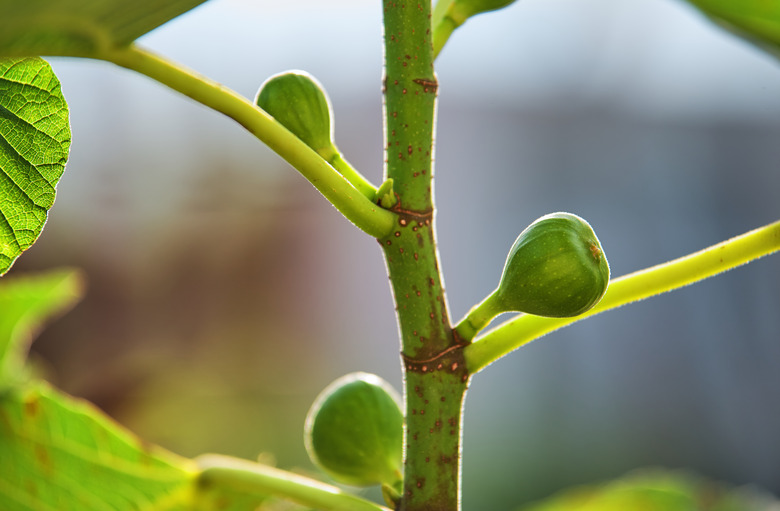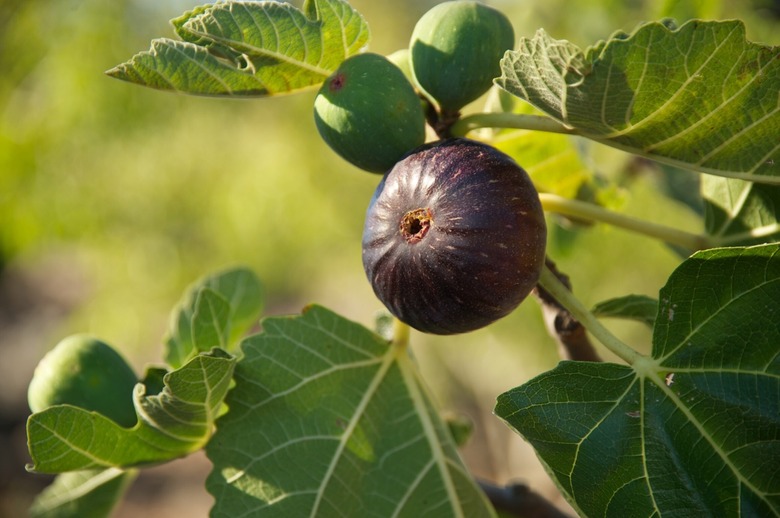How To Grow Figs
We may receive a commission on purchases made from links.
The edible fig tree (Ficus carica, USDA plant hardiness zones 7-10) is one of the easiest fruit trees for home gardeners to grow. Fig trees are ideally grown in warm climates, but with a bit of extra TLC, you can grow them in almost any climate.
The trees produce small, oblong fruits that go from green to purplish-brown as they ripen. Edible fig trees don't have complicated pollination requirements. In fact, most of the fig tree varieties for sale at garden centers are self-pollinating plants.
Fig trees need the right environment to thrive. In colder climates, that typically means you'll need to bring your plant indoors when it starts to get chilly. Otherwise, figs are probably a lot easier to grow than you might think. They also have an impressively long life span — up to 200 years in some cases.
Best Uses for Figs
Best Uses for Figs
Figs are the ultimate gourmet fruit. The delicious flavor of a fig pairs well with cheese and other salty accoutrements. Store-bought figs tend to cost a pretty penny, so growing them in your backyard can help you cut back on grocery costs if you're a fan of this exotic fruit.
Figs are also a great addition to fancy pizzas. If you have never had pizza with caramelized onion, figs and goat cheese, it's time to rectify that. If you have an abundance of figs on your hands and you don't have enough freezer space or don't want to dry them, consider making tasty fig jam. It is a delicacy with cheese and crackers. Be careful, though — figs are yummy, but they can produce laxative effects.
A fig tree can also provide some visual interest to an otherwise bare yard. While fig trees don't need a lot of pruning to stay healthy, you can shape them to fit a certain aesthetic. In the garden, fig trees can provide both shade and ornamental value.
How to Grow Figs
How to Grow Figs
Growing figs isn't as ultra complicated as you may expect, but there are a few things you need to know to be successful.
- Common Name: Edible fig tree
- Botanical Name: Ficus carica
- When to Plant: Plant in the spring or fall when there's no longer a danger of frost
- USDA Zones: 7-10, depending on cultivar; some cultivars are suitable for zone 6
- Sun Exposure: Full sun
- Soil Type: Any kind of soil will do. Figs prefer neutral to slightly acidic soil, though.
- When it's in Trouble: Spots on the underside of foliage and loss of vegetation can mean that there's something wrong with your plant.
- When it's Thriving: Lobed leaves will be a deep-green color, and the plant will produce small, firm fruit.
Starting Figs From a Sapling
The easiest way to get a fig tree growing in your garden is to start with a nursery sapling. When planting your baby fig tree, keep it at least 20 feet away from any structures, including other trees. An established fig tree has an extensive root system that can do some damage, so give it a wide berth.
To transplant a fig tree you have purchased from a nursery, remove it gently from its container. Dig a wide hole that is almost twice the size of the root ball and just as deep. Put the tree's root ball into the hole and spread the roots without damaging them. Fill the hole with soil, and you're set. Just make sure to water your new tree consistently to help it get established.
If you decide to plant in containers, make sure the container is large enough to accommodate the plant — at least 30 gallons. Use a well-draining soil mix that contains plenty of compost.
In What Zone Do Figs Grow Best?
In What Zone Do Figs Grow Best?
The edible fig tree grows best in USDA plant hardiness zones 7 to 10. However, some cultivars are hardier and can grow in zones as cold as 6. You can get away with growing them in even colder zones, but you will need to bring them indoors during the winter, placing them in an insulated but cool space such as an unheated garage. Fig trees need to go dormant and experience about 100 chilling hours during winter to produce fruit the following year.
If you are planting in the recommended zones, you can plant your fig tree directly outdoors. If it gets colder than 10 degrees Fahrenheit in your region, plan to use containers so you can easily bring the plants inside for the winter.
Fig trees usually die when they are exposed to prolonged freezing temperatures, but sometimes, new growth will still appear in the spring around the base of the tree. However, it can take some time for the plant to begin producing anew — sometimes as long as several years. That's why you're better off bringing your plant inside if a cold winter is expected.
When Should You Plant Figs?
When Should You Plant Figs?
You should plant fig trees when the tree is still dormant. Ideal planting times are the early spring or late fall. Plant fig trees outside only when the danger of frost has passed.
Soil, Sunlight and Water Recommendations for Figs
Soil, Sunlight and Water Recommendations for Figs
Fig trees need plenty of sunlight, and they won't thrive in shady conditions. The type of soil doesn't really matter since fig trees are pretty adaptive to different soil conditions. However, the soil should drain well. Fig trees don't need much in the way of fertilization, but you should make sure the planting spot has plenty of rich organic matter.
Regular watering is vital for fig trees, especially when they are young. Give them a good, deep drink at least once a week unless it has been particularly rainy. If you are housing your fig tree indoors throughout the winter season, make sure to keep the soil lightly moist. Add mulch around outdoor trees to keep down weeds and retain moisture. For container-grown plants, increase watering frequency when the fruit starts to form — at least 2 gallons per day. You should also water more frequently during this time with outdoor plants but consider rainfall when working out how much to water.
While some trees require time-consuming pruning, fig trees only need a light trim every once in a while. During the colder months when the plant is dormant, remove any dead foliage and scraggly branches to promote renewed growth. When a fig tree is producing fruit, it may produce a lot of figs. Typically, if there are a lot of figs, they may be small in size. To encourage the growth of larger fruit, thin out the small ones.
How to Winterize Figs
How to Winterize Figs
You can do several things to improve a fig tree's chance of surviving a freezing-cold winter. If you don't have a cool, unheated space indoors, you can follow a few tips to help winterize your fig tree:
- You can prune it into a bush or shrub shape so that you can easily protect it with winter coverings, like burlap.
- Use mulch, like leaves and straw, to insulate the roots of your fig tree. You will also need to cover the top of the plant with a tarp or burlap to protect it from the elements.
- Only take away the protective covering when you're sure there is no more danger of frost.
Fig trees that are brought inside for the winter will lose their foliage as they go dormant. Don't be alarmed; this is normal during dormancy.
How to Harvest Figs
How to Harvest Figs
You can enjoy figs right from the tree or pick them for later, but take note that figs don't last long. Figs will only keep in the fridge for a few days. Freezing or drying will preserve them for a longer period of time. Don't bother harvesting figs until they are fully ripe because they won't ripen after they are picked. How can you tell when a fruit is ready for picking? The fruit will be a little soft. Wear gloves to prevent allergic reactions due to fig tree sap.
Trees in warmer climates will typically produce two crops a year — in early summer and in fall. Most trees will only produce one crop in colder climates even if they are housed indoors because of the decreased sunlight and cooler temperatures.
Common Pests and Other Problems for Figs
Common Pests and Other Problems for Figs
Pests that can affect fig trees include root-knot nematodes and thrips. Small mammals, like squirrels, can also be a problem for fig trees because they love to eat the fruit. You can protect figs from hungry critters with netting or chicken wire. However, this is only feasible with young trees. Keeping an eye on when fruits are ready to pick is also crucial in keeping them away from the bellies of birds and other garden creatures.
The larvae of root-knot nematodes can quickly destroy a plant's ability to take up nutrients, which is a death sentence for plants. That said, most fig trees don't become pest magnets unless they are unhealthy to begin with.
If you notice your fig tree losing its leaves, it may be due to a lack of water. If you promptly water your fig tree, this leaf loss won't kill your plant, but it can hamper fruit production.
Common Diseases for Figs
Common Diseases for Figs
Diseases that may affect your fig tree include leaf spot and rust. These fungal infections both produce changes in the foliage. Rust is ugly, but it won't usually kill a plant outright. You can avoid many fungal diseases by maintaining proper gardening hygiene. Wash your tools and clean up your garden at the end of the growing season.


